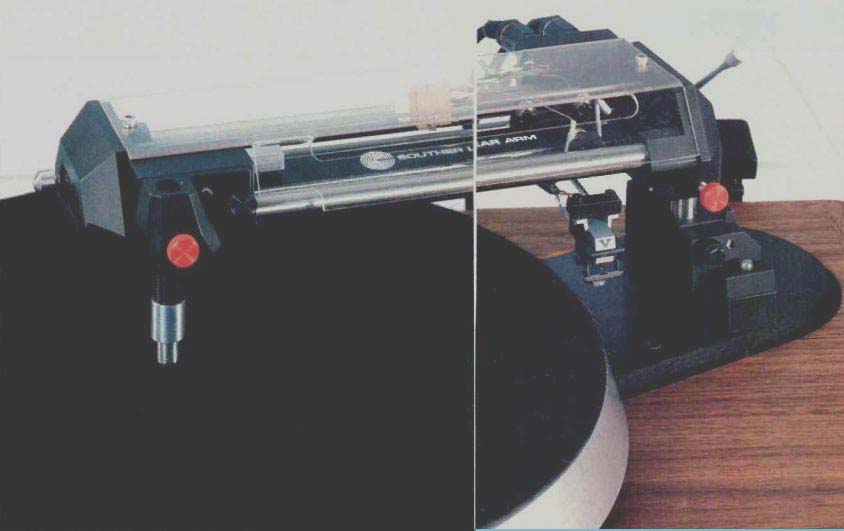
Manufacturer's Specifications
Tonearm Arm Type: Linear, tangential tracking.
Pivot to Stylus Distance: 2 inches.
Maximum Tracking Error: 0°.
Cueing: Vertical and horizontal.
Anti -Skating Adjustment: Not required.
Tracking Force Range: 0.5 to 2.5 grams.
Cartridge Weight Range: 1 to 20 grams.
Vertical Bearing Type: Conical sapphire vee bearings on stainless steel axle.
Lateral Bearing Type: Ball.
Vertical Tracking Angle Adjustment: ± 100. Headshell: Integral part of tonearm.
Effective Mass: Variable, 1.68 x to 2.38 x cartridge mass.
Price: $850.00; additional tonearm tubes, $30.00.
Company Address: 429 York St., Canton, Mass. 02021.
Cartridge Tracking Force, at Stylus Tip: Optimum, 10 mN (1.0 gram); maximum, 12.5 mN (1.25 grams).
Tracking Force, Total Tonearm Setting with Dynamic Stabilizer: Optimum, 15 mN (1.5 grams); maximum, 17.5 mN (1.75 grams).
Tip Geometry: Hyperelliptical, 5 x 38 microns (0.2 x 1.5 mils), long contact area.
Trackability at 10 mN (1 gram)
Tracking Force: At 400 Hz, 30 cm/S; at 1 kHz, 46 cm/S; at 5 kHz, 80 cm/S; at 10 kHz, 60 cm/S; all figures typical in cm/S peak velocity.
Vertical Tonearm Resonance: Less than 5-dB rise at 14 Hz in SME Series III arm (without SME damper). Output Voltage: 3.2 mV rms at 1 kHz at 5 cm/S peak velocity, typical.
Frequency Response: 10 Hz to 28 kHz.
Recommended Load: 47 kilohms in parallel with 250 pF (including tonearm wiring, connecting cables, and preamplifier input).
Capacitive a loading from 100 to 400 pF will cause negligible change from the recommended 250-pF loading.
Resistance: 950 ohms d.c., typical.
Inductance: 330 mH at 1 kHz, typical.
Weight: 6.6 grams.
Price: $220.00; with alignment gauge and Micro-Ridge stylus, $275.00.
Company Address: 222 Hartrey Ave., Evanston, III. 60204.
The SLA-3 is a linear -tracking or tangential tonearm made by Souther Engineering Corp. of Canton, Massachusetts.
Most of the currently available linear-tracking tonearms are integral parts of turntables and are often supplied with a phono cartridge installed by the manufacturer. The Souther SLA-3 is one of the very few linear -tracking tonearms which can be purchased separately. It comes without a cartridge and can be mounted on the turntable of your choice.
The difference between a linear -tracking tonearm and a pivoted tonearm is the manner in which the cartridge is moved across the record. The more common, pivoted tone arm causes the cartridge to traverse the record in an arc.
This means that, if no cartridge offset and overhang were used, the cartridge could be exactly tangent to the record groove at only one spot on the record. The use of offset and overhang, if properly adjusted, allows the cartridge to be exactly tangent at two locations across the record. The reason the cartridge should be tangent to the groove across the entire record is that the cutter heads used to make records are moved by a precision lathe system in a straight line from the rim toward the center of the record. If cutter heads were moved by a pivoted mechanism, then pivoted tonearms could be made to follow the same arc and would, therefore, trace the groove exactly as it was originally made.
If a cartridge doesn't trace the groove exactly as made by the cutter head, distortion results. As it is, it would appear that the linear-tracking or tangential technique is the best way to achieve zero tracking error across the record.
The obvious question is then: Why aren't all tonearms made this way? The answer is too complex to discuss completely in this report, but here is a brief explanation of one of the problems: When the record is being made, the cutter is driven across the record and decides where the groove shall be. When the record is being played, the cartridge must determine where the groove is, and some method must be used to supply the force needed to make the cartridge follow the groove. It sounds simple-until you start to list the imperfections of real records. If they were perfectly concentric, if they had no warps, if the number of grooves per inch were exactly the same for all records, etc.-in other words, if records were perfectly uniform and predictable, then the problems to be solved would be much simpler. As it is, the vast majority of tonearms use the horizontal -pivoting and offset-cartridge technique because, while such tonearms can't be perfect and are hard to design, the problems encountered in designing a linear-tracking tonearm are even greater. Some linear -tracking tone arms use a servo motor to overcome friction and maintain the cartridge tangent to the groove, but they are expensive, and the servo itself can cause problems. Mechanical, non servo, linear arms were made in the past, however.
Lou Souther decided, in December 1979, to tackle the problems of designing a linear -tracking tonearm. He had spent 26 years with the Department of Defense until he decided to take an early retirement in 1981. He had also worked for manufacturers of radar and communication antenna systems. His experience in the mechanical design of tracking antennas, coupled with his love of audio (his first hifi system was assembled in 1953), came together, and he formed Souther Engineering to design and manufacture a high-quality, linear-tracking tonearm. He decided that, if the problem of friction could be overcome, he would not have to use a servo system. This would mean a decided reduction in complexity and, therefore, lower cost and increased reliability. The results of Lou's efforts are embodied in the Souther linear -tracking tonearm and are covered by 24 claims in U.S. Patent No. 4,346,467. In 1982 the Souther tonearm won a Design and Engineering Award at the Con sumer Electronics Show. There were earlier versions (the SLA-1 and SLA-2); the tonearm that I tested is the SLA-3.
The intricate detailing of the rigid, polyurethane plastic parts of the SLA-3 was the first thing that I noticed. Most linear -tracking tonearms of the past have not displayed the attention to detailing or finish which Souther has lavished upon the SLA-3. This gave me the immediate impression that the SLA-3 has been carefully engineered and is a serious attempt to overcome the problems that have plagued linear-tracking tonearms of the past. The tiny leads were the next thing I noticed; they are the thinnest, most flexible that I have ever seen. Because they are so thin and flexible, their contribution to the total friction must be very small. They are reinforced at each end by flexible silicone rubber. The cartridge carrier has three stainless-steel wheels, each with precision bearings, which ride on two round quartz -rod tracks. This serves as the horizontal bearing system. I checked the friction by moving the carrier back and forth along the tracks and it seemed very low, which is a necessity for proper operation of this design. I noticed that, because the cartridge carrier is held on the two tracks by gravity alone, it appears to have more play than might be desirable. I checked the vertical bearings by hand and they had very low friction and no excess play. I counted 12 adjusting screws, not counting those used to mount the cartridge!
==========
MEASURED DATA
Souther SLA-3 Tonearm External Lead Supplied by user Parameter Measurements/ Length Comments Structural Well damped Pivot to Stylus 2 in. (5.1 cm) Resonances Pivot to Rear of Not applicable Base Mounting 3 1/2 in. (8.9 cm) x 3/4 in.
Arm (1.9 cm) hole plus two Height 2 in. (5.1 cm) screws Adjustment Range Tracking Force 0 to 3.0 grams Shure V15 Type V Cartridge Adjustment Parameter Measurements/ Tracking Force None Comments Calibration Coil Inductance 355 mH Cartridge Weight 2 to 12 grams Coil Resistance 878 ohms Range Counterweights Three (6.1, 3.9 and 1.8 grams) . Output Voltage Left, 0.32 mV/cm/S; right, 0.34 mV/cm/S (lateral modulation)
Counterweight Mounting Direct to arm, with thumbscrew
Tracking Force 1.3 grams without brush, 1.8 grams with brush
Sidethrust Not applicable Cartridge Mass 6.6 grams
Correction Microphony Very low Pivot Damping None Hum Rejection Excellent Lifting Device Lever High-Frequency 25 kHz Headshell Offset Not applicable Resonance Overhang Not applicable Rise -Time 21 uS Adjustment Low-Frequency 12 Hz Bearing Very good Resonance Alignment Low -Frequency Q 1.5 Bearing Friction Below 40 mg Recommended 47 kilohms Bearing Type Jeweled vertical and horizontal Load Resistance Lead Torque Very low Recommended 250 pF Arm Lead Left channel, 65 pF; right Load Capacity channel, 53 pF Capacitance Arm Lead 3 ohms each channel Recommended 1.8 grams with brush Resistance Tracking Force
==========
The Souther SLA-3 is not difficult to mount to most good turntables. A few turntables, such as the Oracle, may require an adaptor, since the SLA-3 base is rectangular and its longer side is 3 1/2 inches. Adjusting the SLA-3 for proper performance is not an easy task. The instructions which I received were not as clear as think they should be. A great deal of adjusting and readjusting was necessary over a long period of time before I was satisfied that the performance was as good as it could be. The listening panel sessions and the technical measurements were repeated a number of times.
It is important that the turntable and the tonearm be close to perfectly level. A bubble level is mounted on the aluminum strip which separates and supports the two quartz-rod tracks. This is used to level the tonearm and turntable after they have been made parallel. The tracking force is adjusted by sliding a counterweight on the thin rod which extends out from the rear of the cartridge-mounting platform. Three counterweights are supplied, to match different cartridge weights. The cartridges that I used weighed about 6 grams, so I used the heaviest counterweight, which was 6.1 grams.
The other counterweights supplied are 1.8 and 3.9 grams each. Using the heaviest counterweight possible and keeping it close to the vertical pivot allows the lowest dynamic mass to be achieved. The total weight of the cartridge mounting platform and the rod is only about 1.25 grams! When a cartridge and counterweight of 6 grams each are added, the total mass is only 13.25 grams, which is extremely low. Calculations supplied by Souther indicate that the effective dynamic mass of the SLA-3, with a cartridge mounted, is only about double the cartridge mass alone! Such low mass will cause the low -frequency resonance produced by the cartridge compliance and tonearm mass to be higher than the desired 10 to 15 Hz for most cartridges, especially low -compliance moving -coil types.
A means is provided to lift the cartridge at the end of a record, by the attraction between the steel cartridge-mounting screws and a small magnet which can be mounted near the end of the track. I did find some recordings which were recorded so close to the label that the magnetic attraction first reduced the tracking force (thus causing distortion) and then lifted the cartridge before the side was finished. This can be eliminated by removing the magnet when playing such long records.
The pivot -to -stylus distance for the SLA-3 is only 2 inches.
I checked the SLA-3 for its claimed ability to track warped records, since this is usually a weak point for such a short tonearm. I placed a foam wedge under one side of a record, which caused it to vary in height a little over 3/e of an inch each revolution. The SLA-3 tracked the record even when I tapped the side of the turntable base! Of course, the effects of wow could be heard easily. I can't imagine anyone expecting to even be able to play such a badly warped record on most turntables. I also tried off -center records, and the SLA-3 did a decent job on these as well. However, the ability to track high-level passages is reduced alternately in the left and right channels as the stylus is forced back and forth. No stylus force indication is provided, so you will have to use a gauge to set the stylus force. (I use the Arpo 0.5 to 5-gram model to set tracking force, even on tonearms with calibrated adjustments. It is listed in the latest Jensen Tools catalog on page 127 and costs $74.95.) Since the output cables, which you must supply, plug into the top of the tonearm, they will probably interfere with most turntable covers. For turntables with floating suspension, the cables should be flexible.
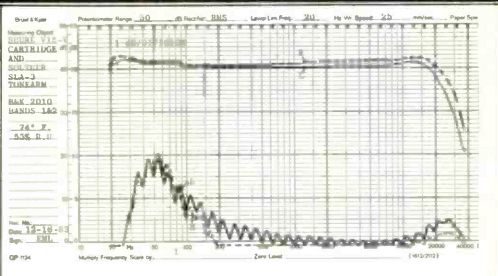
Fig. 1--Frequency response and interchannel crosstalk of arm and cartridge
using B & K 2010 test record.
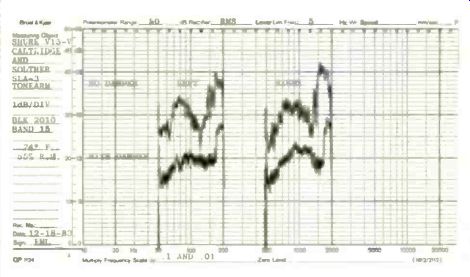
Fig. 2--Low-frequency tonearm/cartridge resonance is at about 18 Hz with
a Q of 4. Note the anti-resonance at 12 hz. (B & K 2010.) Also note that
frequency scale should be multiplied by factors of 0.1 (left) and 0.01 (right).
Fig. 3--Interchannel phase of tonearm and cartridge as a function of frequency (B & K 2011, band 7, pink noise). Maximum phase shift is 36° at 20 kHz, equivalent to 5µS.
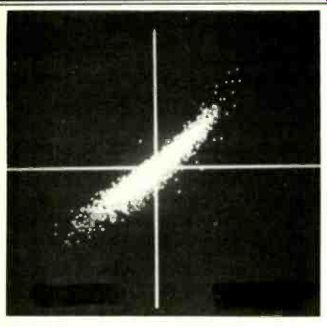
Fig. 4--Interchannel phase of arm and cartridge, left vs. right channel
(B & K 2011, band 7, pink noise).
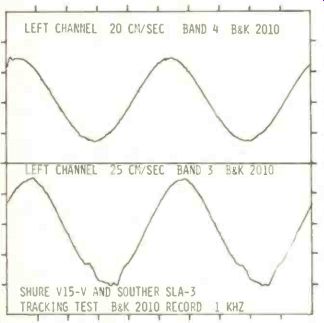
Fig. 5--Tracking of arm and cartridge at 1 kHz for 20 and 25-cm/S lateral
modulation (B & K 2010); total tracking force of 1.8 grams including
brush. Note the remarkable tracking on the lower waveform, the highest level
on the disc.
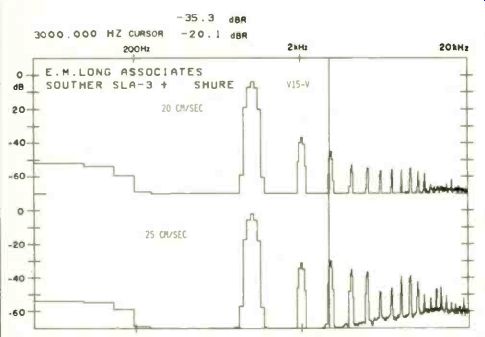
Fig. 6-Spectral components caused by slight mistracking of 1-kHz signals
shown in Fig. 5. Level of third harmonic (3 kHz) is 1.8% at 20 cm/S and 10%
even at 25 cm/S--which some arm/cartridge combinations cannot even track.
Measurements and Listening Tests
As I mentioned earlier, there were a number of listening sessions, and the technical measurements were also repeated a number of times. The listening panel was invaluable in calling attention to subtle details in the sound reproduction, which, by further adjusting the SLA-3, I was able to improve. It is possible that performance might be further improved by additional refinements in the adjustments, but I felt that I had arrived at a point where such improvements would be slight. The Shure V15 Type V cartridge was selected for the main body of the measurement and listening correlations, although other cartridges were also tested in the SLA-3.
Figure 1 shows the amplitude versus frequency response and the interchannel crosstalk of the Shure V15 Type V cartridge in the Souther SLA-3. This is an excellent result, and the listening panel was unanimous in their positive comments about the good stereo effect produced by this combination, which they judged to be as good as the reference system.
Figure 2 shows the low -frequency response of the Souther/Shure combination, from 5 to 20 Hz. Usually the combination of tonearm mass and cartridge compliance resonates somewhere in this frequency range, which causes a rise in the response. Both the left and right channels are shown; the upper curves are without the Shure V15 Type V's damper, and the bottom curves are with the damper. The low frequency resonance appears to be about 17 to 18 Hz, with a Q of 4. An anti-resonance at 12 Hz is present without the damper. The listening panel's comments concerning the bass reproduction were very interesting in that some panel members felt that the Souther/Shure combination had less bass than the reference system, while others commented that the bass sounded "tighter and more solid." The present reference system does have a slight rise at about 12 Hz with a Q of about 3. All listening was done with the damper in place, since I found that it also helped to damp out the arm's slight horizontal bearing instability.
The interchannel phase difference is shown in Fig. 3, and I suspect, from this and other measurements, that the inter channel phase difference caused by the original cutting system may possibly account for most of this. A phase difference of 36° at 20 kHz is equivalent to a time difference of only 5µS, which should be insignificant. Figure 4 is a photo taken from the display of the Nicolet Explorer Ill digital storage oscilloscope and shows the left versus right channel output over a period of time. If there were no difference between the channels, the display would show a straight line of dots at a 45° angle. As it is, the small amount of spread indicates excellent performance for the Souther/ Shure combination. Certain records produced very stable images, as some members of the panel commented.
The tracking ability of the Souther/Shure combination is very good, with one reservation: The centering of the record is very important. This is true for all tonearm/cartridge combinations, but the Souther/Shure combination will track even the highest-level, 25-cm/S band of the B & K 2010 test record, if it is perfectly centered. Most other tonearm/cartridge combinations have difficulty tracking this band. Figure 5 shows the 1-kHz waveform produced by the left channel of the Souther/Shure combination for the 20and 25-cm/S bands of the B & K 2010. I caused the record to be slightly off -center to show how it effects the tracking. The distortion varies for each rotation of the record as the tracking force against each groove wall changes. While the photo can only show one instant in time, the shape of the waveform, and therefore the amount of distortion, is actually varying, and I captured the signal when it looked and sounded its worst. The upper trace for the 20-cm/S band is very good and the distortion products are quite low for this high level of groove modulation. Figure 6 shows the spectrum of the distortion as sampled over a period of time. The cursor is at the third harmonic, and the distortion is about 1.8% and 10% for the 20and 25-cm/S levels respectively.
The eighth, ninth, and tenth harmonics are seen to stand out, which could partly account for comments made regarding a mild brightness heard during the listening sessions.
The Souther/Shure combination also shows a slightly rising response with increasing frequency, so it is difficult to pinpoint the cause. I think that each effect plays a part.
The Souther/Shure combination gave the best results I have seen to date for the 10.8 -kHz tone burst of the Shure TTR-103 test record, which is appropriate enough! Figure 7 shows the waveform of the 10.8 -kHz signal for the 15- and 30-cm/S bands of this record. There is no compression evident, even at the 30-cm/S level, which is excellent. Figure 8 shows the spectrum of the distortion components for these levels of modulation. The distortion components are about -50 dB (0.3%) for the 15-cm/S level and about -40 dB (1%) for 30 cm/S, which I consider to be very good. There is an increase in distortion components in the middle register for the 30-cm/S level, which could also have been a cause of some panel members' comments about brightness during high-level passages. A better explanation for these comments might be that these high levels are being compressed less by the Souther/Shure combination than by the reference system.
Figure 9 shows the left- and right-channel responses to the 1-kHz square wave of the CBS STR-112 test record. If you compare this to other square-wave results that I have shown in past reports, I think you will agree that, although the waveform produced by the Souther/Shure combination is not perfect, it is one of the best. I noticed also that both the amplitude versus frequency response, shown in Fig. 1, and the square -wave response indicate that the "swayback" or depressed upper -midrange response, usually associated with moving -magnet cartridge designs, has been eliminated by Shure in the V15 Type V.
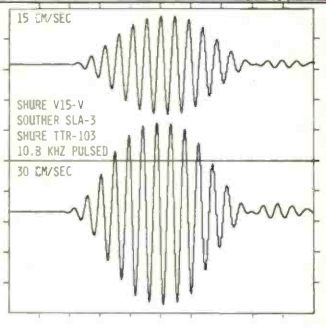
Fig. 7--Arm/cartridge output at 15 and 30 cm/S, 10.8 -kHz pulse test. The
jaggedness of the waveform is due to the digital storage oscilloscope.
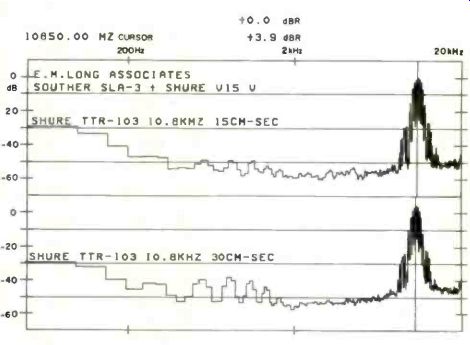
Fig. 8--Spectrum of distortion products for 15 and 30-cm/S signals shown
in Fig. 7. Frequencies above 200 Hz are at least 40 dB down for the 30-cm/S
level, which is excellent.
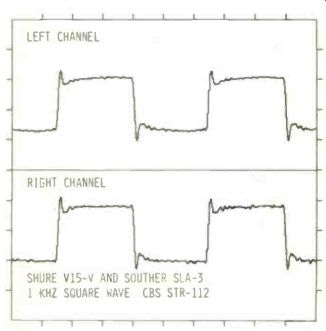
Fig. 9--Arm/cartridge output for 1-kHz square wave CBS STR-112).
Conclusions
As mentioned above, I tested the Souther SLA-3 with other cartridges besides the Shure V15 Type V, including a lower-compliance, moving-coil type. Performance with the moving -coil cartridge was also good, albeit with different emphasis, being better in some areas and worse in others.
The trade-off might be summarized as being between a very subtle delicacy in the sound of low-level passages and material like string quartets with a moving -coil type versus the ability to sound very clear and open, even at the highest levels, for the Shure V15 Type V. The usually lower compliance of moving -coil cartridges means that you will have to choose carefully to get good performance. The damping of mechanical energy from the cartridge is very good with the Shure V15 Type V but could be a problem with other cartridges, depending upon materials and construction. The effects of any reflected energy will also change as the position of the horizontal bearing changes as it moves across the record, so it is important to eliminate this energy as close to the cartridge as possible. The damping brush of the Shure V15 Type V is also a very large factor in the level of performance that I was able to achieve, and, of course, other cartridges don't have this.
The Souther SLA-3 is capable of excellent performance; however, making it produce these results will require a good deal of patient adjusting and readjusting by the user. Even without knowing all of the economic factors involved, I would say that the price of the Souther SLA-3 makes it a reasonable value. Lou Souther may not have overcome all of the problems of linear -tracking tonearm design, but the SLA-3 is the best of its type that I have seen.
-Edward M. Long
(Adapted from: Audio magazine; May 1984)
Also see:
Shure V15 Type V Phono Cartridge (Equip. Profile, Nov. 1982)
Shure MV30HE Phono Cartridge/SME 3009 III Tonearm Combination (June 1981)
Shure V15 Type IV Phono Cartridge (Feb. 1979)
= = = =